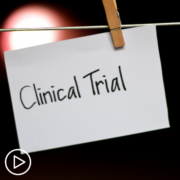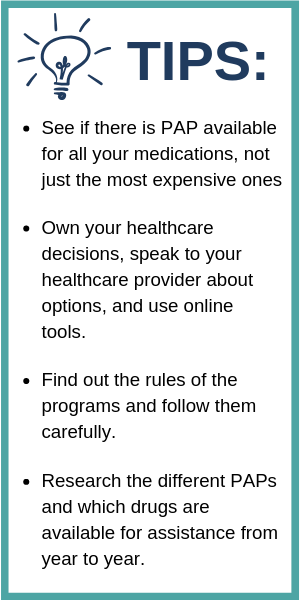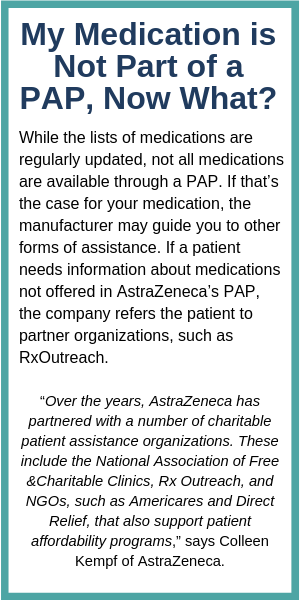How Can You Access an MPN Clinical Trial? from Patient Empowerment Network on Vimeo.
How can MPN patients access clinical trials? Dr. Ruben Mesa provides tips and resources for patients to learn more about participating in an MPN clinical trial.
Dr. Ruben Mesa is an international expert in the research and care of patients with myeloproliferative neoplasms (MPNs). He serves as executive director of UT Health San Antonio MD Anderson Cancer Center in San Antonio, Texas. More about this expert, here.
See More From MPN Clinical Trials 201
Related Programs:
Transcript:
Katherine:
Dr. Mesa, let’s move on to participation. How can someone find out about what trials are available to them?
Dr. Mesa:
So, first and foremost, it begins with a conversation with your physician. And overall, clinical trials – the majority of clinical trials are in situations where things are not going perfectly. You know, if you’re doing well, you’re feeling well, you’re doctors a hundred percent happy with how you’re doing, then a clinical trial may or may not be an option. They are usually in a situation where things are not going as well as we would like. You have residual symptoms; you’ve only had a partial response.
If the current medicines for the disease don’t agree with you, you had side effects, or others. Now additional research for learning about these trials include many different organizations. There are disease-specific ones, like the MPN Research Foundation, MPN advocacy & Education International, MPN Hub, amongst many others. There is the broader, clinicaltrials.gov. Now, that’s a very broad site.
It is searchable. Sometimes it gives you more information than is helpful, but most things are listed on there. The Leukemia and Lymphoma Society, at LLS.org, has a specific kind of navigation function that they have for learning more about clinical trials and getting matched up with them.
But it truly starts with you and your doctor. If things aren’t working well, what are the options that I have? Is it a different option in terms of therapy? Or, if not, asking about clinical trials because clinical trials, again, will have their own upsides and downsides you and doctor will go through depending upon your situation.
Katherine:
What are the barriers to accessing clinical trials? Are there any?
Dr. Mesa:
So, first, clinical trials have, kind of, the broader logistics barriers. Frequently, you need to enroll and participate at a particular site and sometimes that site is not locally. Your doctor may or may not be participating in that trial. Some trials are only done at a single institution. So, for many, there can be a hassle factor.
You know, it’s impractical for me to be there, or be there for the frequency of visits or other pieces. So, that is one potential barrier. Overall, we hope that insurance or other coverage is not a barrier. In general, clinical trials are structured in a way to hopefully have them be financially neutral for patients.
It’s not less expensive to get your care if you’re on a trial, but it shouldn’t be any more expensive because the standard of care items are billed to your insurance as they would be normally. But if there are things that are experimental, they are included as an expense of running the trial and you’re not charged for those. Now the other barrier is, specifically, trials tend to have a specific set of eligibility for participation that are medical. It may be in a subset of patients based on any number of factors.
And there may be other limiters in terms of prior health conditions, sometimes in terms of age, sometimes in terms of how well the heart, the liver, the kidneys, or other things work. There’s both kind of a logistical piece, but then there is very specific eligibility. As a researcher, when a patient is a candidate for a clinical trial, I will have to go point by point, and sometimes there might be 50 points of disease, blood tests, and organ function – other pieces that need to be correct for participation in that trial.
It’s not to say that drug may not conceivably help that individual. It’s to say that for that specific trial, that’s what’s needed to participate in that very specific clinical trial.
So, sometimes that can lead to a bit of frustration, but it’s critical so that that trial is comparing the right group of patients so that the safety is really as great as the safety can be in the conduct of that study.
Katherine:
Right. What sort of questions should patients be asking their healthcare team about participating in a clinical trial?
Dr. Mesa:
Well, I think this discussion acts as a nice framework. So first, why should I participate in this clinical trial? Meaning, what is it about my disease that makes a different treatment option a consideration? So, why to begin with? And, if so, why this trial? What drug is it? Why does it help? If it was successful, what can I expect?
Then, what is entailed with me to participate? How frequently do I need to come? What’s involved? Is there more expenses that I can anticipate?
Again, in general, I can hopefully say no. But, of course, if you’re having to fly once a month, that, in some trials, may be covered as an expense of the trial and you’re reimbursed, but it may not. So, again, I think it starts with, medically, why does it make sense? What is involved for me? And then, really, what are those other next steps? And then, what are the alternatives? Sometimes there’s more than one clinical trial as an alternative. Sometimes there’s other options that are not a clinical trial that are an alternative to consider as well.
Katherine:
Before we end the program, Dr. Mesa, I’d like to get your thoughts. What message would you like to leave the audience with related to clinical trial participation?
Dr. Mesa:
Clinical trials are essential.
They are really the only way that we make progress in terms of developing new treatments. In the United States, less than 10 percent of patients with diseases like MPNs and cancers participate in clinical trials. And, to be honest, this really slows our ability to develop new therapies that would benefit folks. These are a very important resource.
I’ll flip it around another way – in children, where, again, we want to do everything that we can – about 80 to 90 percent of children are treated in the conduct of a clinical trial, where, again, they’re constantly pushing the envelope to try to develop better therapies.
And because of that, I think our progress comparatively, in childhood cancers, has been much faster in developing therapies than it has been in adults. So, it’s critical. It’s an opportunity.
Again, it’s very much a personal decision, but it’s something that I would strongly encourage you to consider. Again, one can begin and you are not obligated to remain on if that clinical does not, in the end, end up having the benefit that you had hoped, or if it ends up having a side effect that you prefer to not experience.




 Each company has a different process for enrolling in its PAP. Some applications require extensive financial information, while others require basic information; Some require doctors to fill out a portion of the application, while others only need a signed prescription. Miller says for the Genentech enrollment process, he had to provide his financial information and that the application had two or three pages for his doctor to fill out. Rosenguard says the Celgene application process was extremely simple and that it took about two weeks for him to be accepted into the program.
Each company has a different process for enrolling in its PAP. Some applications require extensive financial information, while others require basic information; Some require doctors to fill out a portion of the application, while others only need a signed prescription. Miller says for the Genentech enrollment process, he had to provide his financial information and that the application had two or three pages for his doctor to fill out. Rosenguard says the Celgene application process was extremely simple and that it took about two weeks for him to be accepted into the program. PAP Basics
PAP Basics

